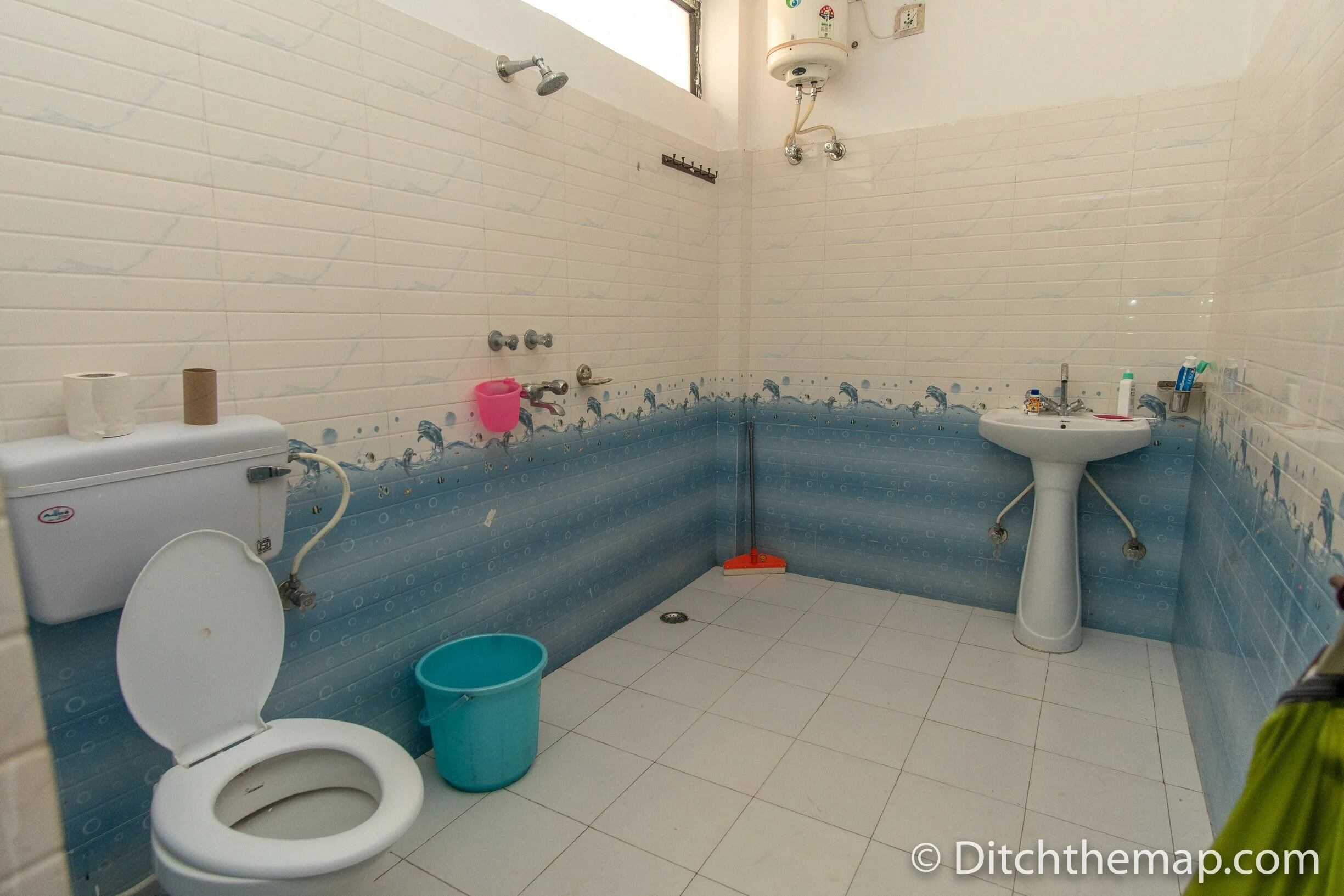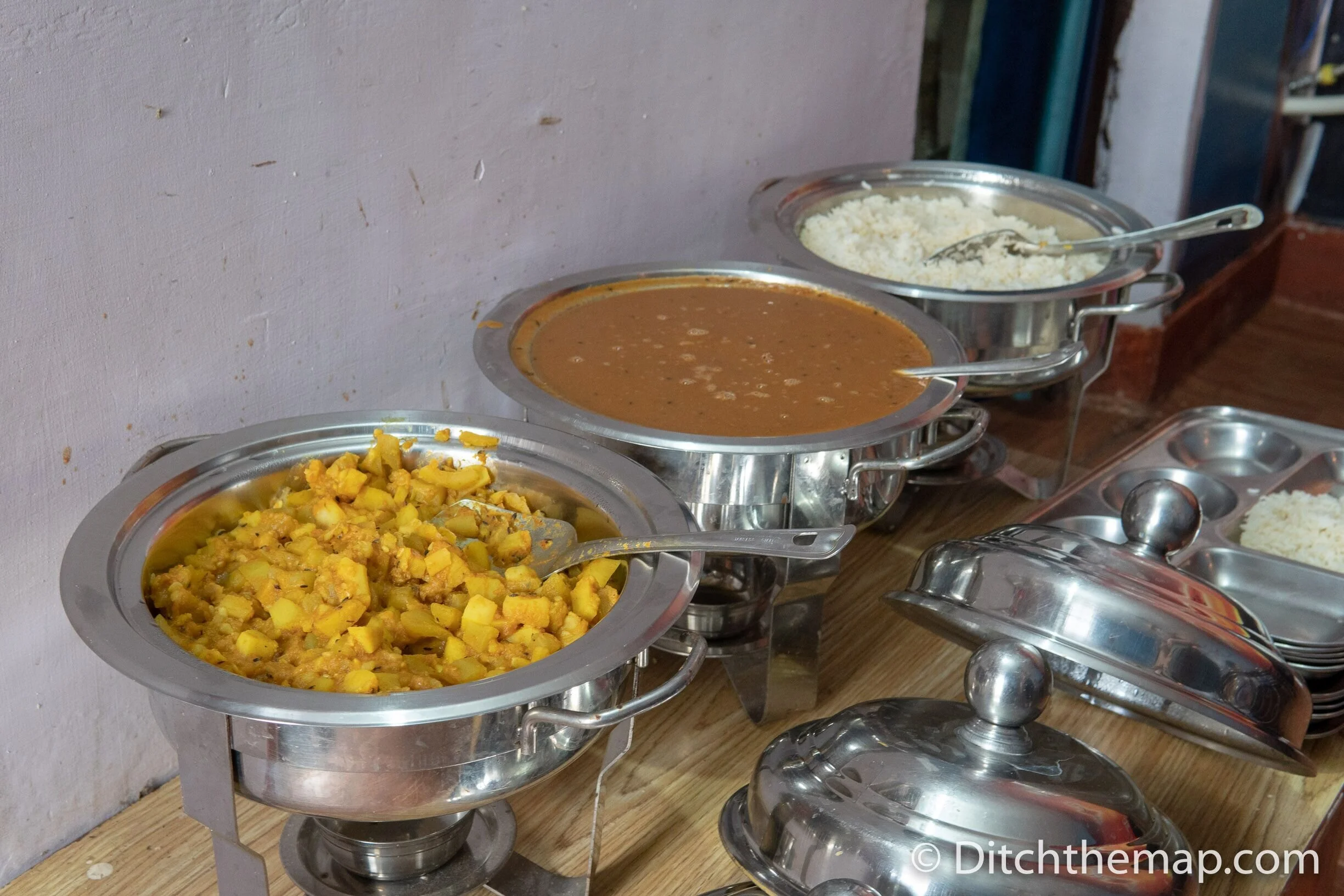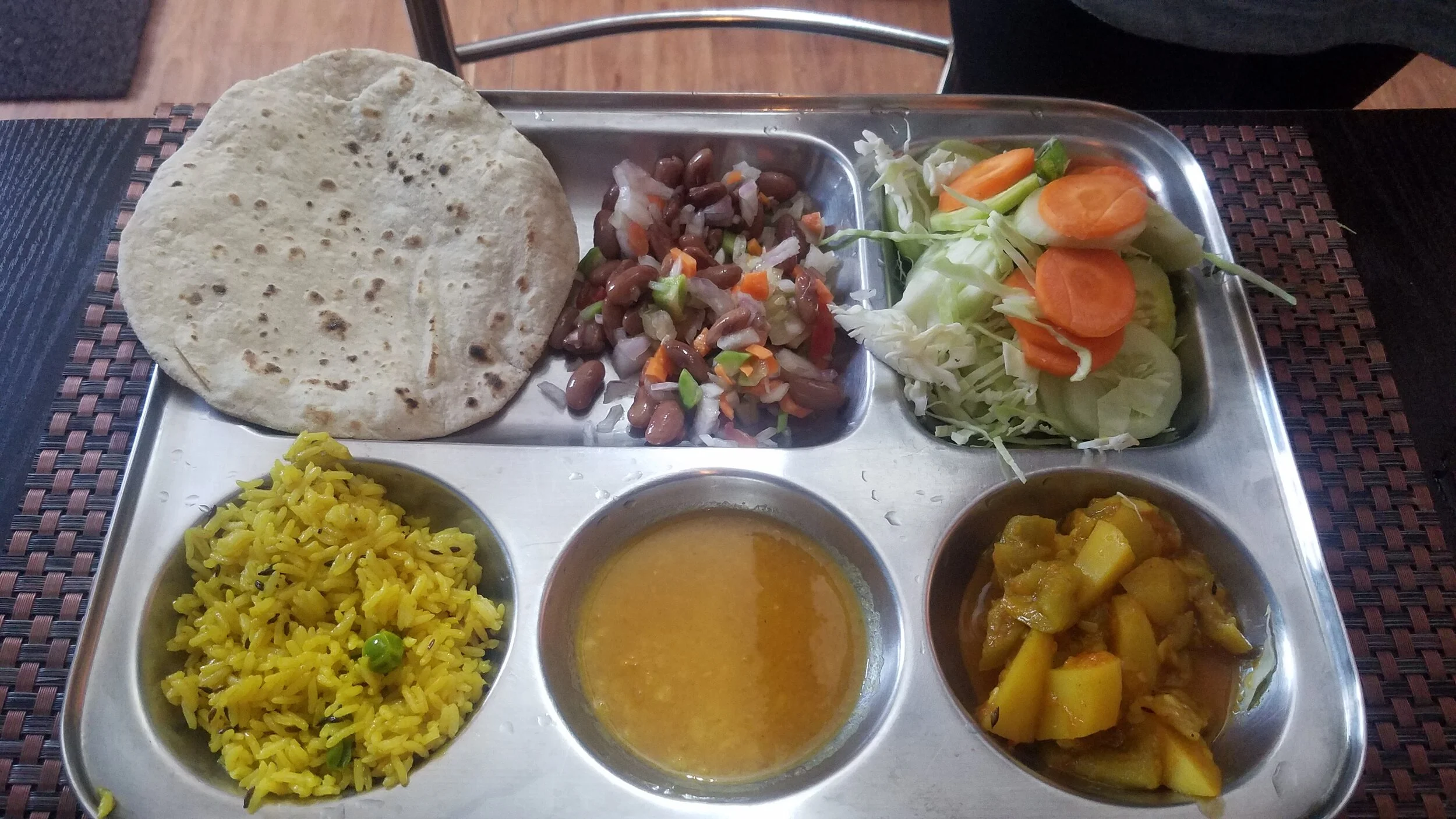An Honest Look at 200-Hour Yoga Teacher Training in Rishikesh, India
/Rishikesh, india
Rishikesh: The Birth Place of Yoga
If you’re considering completing yoga teacher training in India there’s a good chance that Rishikesh has come across your radar, and rightfully so, as Rishikesh is known as the birth place of yoga. Rishikesh is a holy city in northern India where Indians and foreigners alike come to study yoga and deepen their spirituality. In Rishikesh you can walk through the grounds of ashrams, visit jungle temples, and participate in aarti ceremonies along the banks of the Ganges River. In Rishikesh the sacred ‘Mother Ganga’ is flanked by the verdant foothills of the Himalayas. The Beatles visited Rishikesh in 1968 popularizing the city among westerners and solidifying its status as the “yoga capital” of the world. We came to Rishikesh for our 200-Hour Yoga Teacher Training (200 YYT) / RYT 200). Below is an honest look at our experience in both Rishikesh and at our yoga school.
Along the banks of the Ganges River
Hanuman statue in rishikesh
The sunset Ganga Aarti at Parmarth Niketan
Parmarth’s Ganga Ghat
What is Rishikesh Really Like?
Now, let’s get real…as I said, this is my honest review. First and foremost, we were fortunate that our yogshala was away from the street noise, but don’t come to Rishikesh expecting a calm atmosphere or pristine landscapes. If that’s what you are seeking you’d be better served by some place like Bali for yoga teacher training. While we had beautiful moments and meaningful interactions, sadly, we found Rishikesh generally noisy, chaotic and dirty. I felt that there was a vast disconnect between the calm introspection we were trying to cultivate in our yogshala and the frenetic chaos of the city.
Late night snack
When we ventured out of our yogshala in pursuit of solace along the Ganges, we were perpetually disturbed by the honking of motor-scooters zipping recklessly down (what seem liked) pedestrian-only streets. We were met by frequent requests for selfies while tirelessly weaving through thick crowds and dodging puddles of cow diarrhea. We were saddened by the disregard of stray animals who dotted the streets in varying states of despair. The tantalizing smell of frying street food was offset by the smell of urine and the harsh fumes of burning trash. I grew weary of these scenes and found the city progressively taxing on the senses. Sometimes it felt that qualities of the city were in conflict with the principals of yoga outlined in Patanjali’s Eight Limbs of Yoga. This disconnect was difficult to reconcile.
men line up outside of an ashram
A diligent shopkeep cleans the street
crowds walk the street
A Lord shiva staute inside the Parmarth Niketan Ashram
That said, despite my personal grievances with the city, it is important to note that Rishikesh is a significant cultural and religious destination. In fact, the city is so devout that consumption of non-vegetarian food and alcohol are banned. In addition to being a pilgrimage sight for Hindus, Rishikesh provides many opportunities, classes, courses, and programs for foreigners to learn more about Hinduism, Ayurveda, Reiki, sound healing, massage, and different types of yoga. There are many restaurants, bakeries and cafes (many with vegan options) to satisfy your western food cravings. Alternatively, there’s always the option to try tasty local dishes and fresh masala chai from chaiwalas. There are numerous clothing, book, and trinket shops where you can strike a good deal. However, prices are very affordable as is, which is part of the appeal of pursuing yoga teacher training in Rishikesh.



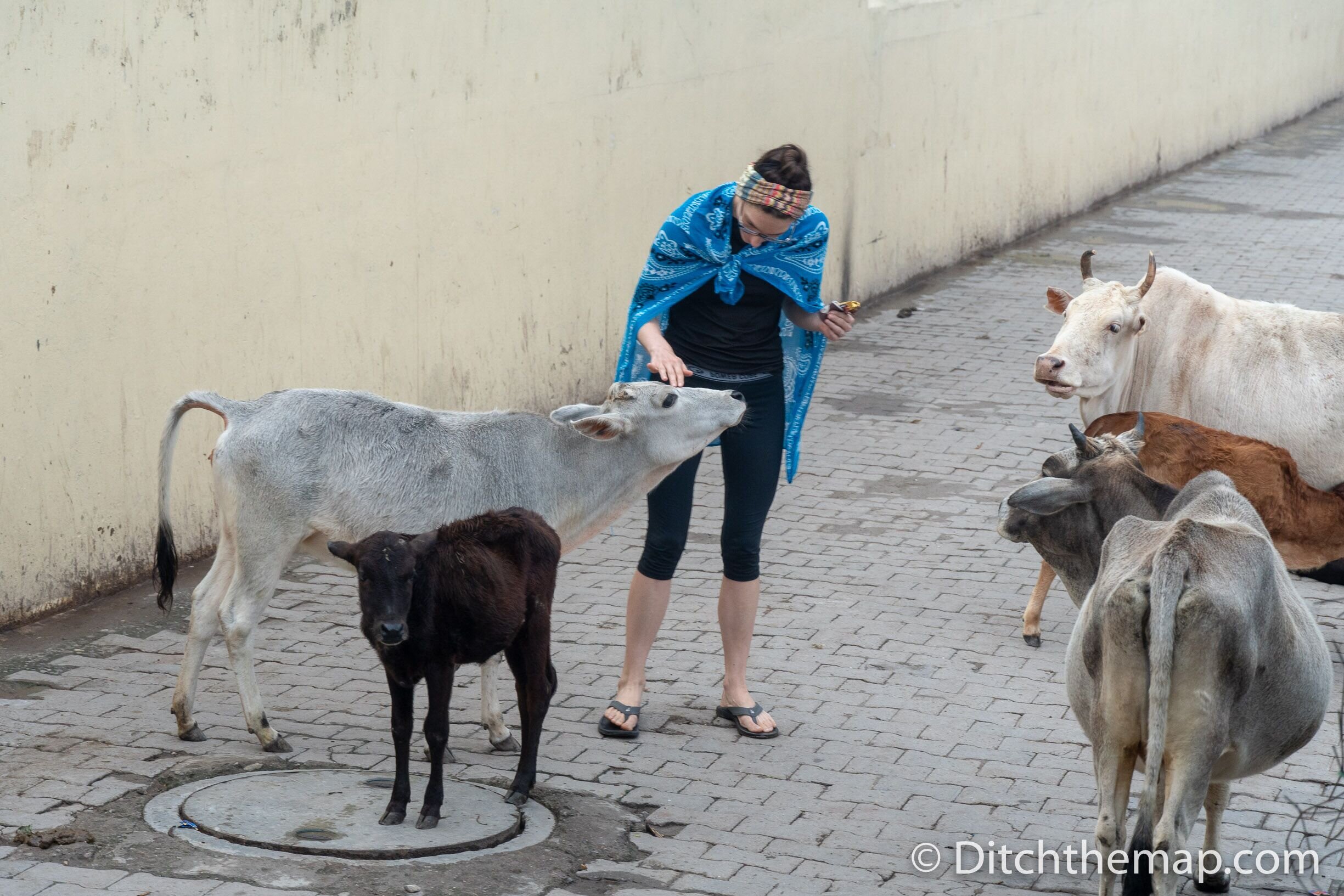

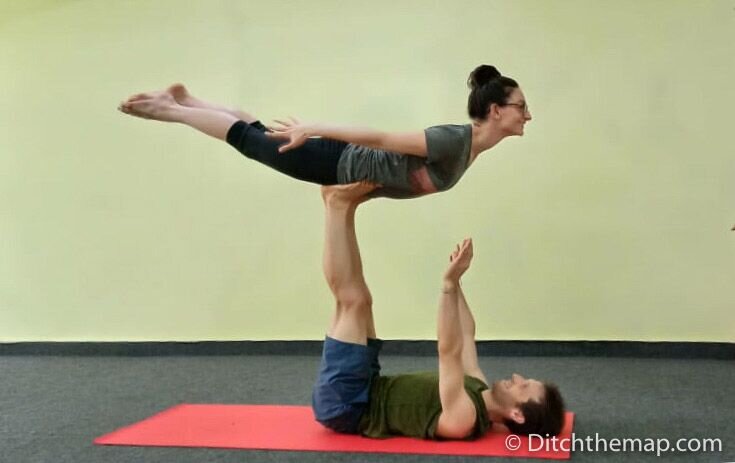

We chose to study yoga in Rishikesh because we wanted an authentic yoga experience in a spiritual environment. We hoped that studying yoga in Rishikesh would provide a cultural context and Hindu perspective not available elsewhere. Also, living in the yoga school while completing the 28-day course sounded incredibly immersive. Cost factored into our decision as well; 200-Hour Yoga Teacher Training courses in Rishikesh range from $750 up to $2,500 USD, which is considerably less than back home in the USA. Tip: don’t forget to negotiate the price!
How To Choose a Yoga School
With over 200 yoga schools to choose from, picking the right program in Rishikesh can be overwhelming! For starters, make sure the yoga school you select is accredited by Yoga Alliance so that you’re able to teach internationally after you complete the course. While reviewing yoga schools online it’s useful to cross-reference reviews between Trip Advisor, Facebook, Yoga Alliance, and the Yoga Schools’ personal website. Unfortunately, you can’t always trust the validity of the reviews, which is why it’s beneficial to use several sources. Identify your top “non-negotiables;” for example, is it really important to you to have a female teacher? Small classes? The cheapest price? A school with green grounds? Look out for these details during your searches to narrow your options.
When we honed in on a few schools that met our criteria in the areas of teacher qualification, accommodation, food, and class size we asked to be put in touch with a former student. This proved immensely helpful and we were able to ask pointed questions and receive honest answers. Regarding cost; some schools offer ‘scholarship’ rates and some schools will allow price negotiation - you’ll never know until you ask! Ultimately we decided on Ekattva Yogshala and while this review is about Ekattva, there are many similarities between yoga schools and programs.
A Detailed Look at Our Yoga Teacher Training Program
Ekattva Yogshala is where we completed our 200-Hour Yoga Teacher Training. We entered the training program with the intention of strengthening and enhancing our own yoga practices, not necessarily to teach. What attracted us to Ekattva (after extensive online research) was the small group, or “batch” size, the plethora of positive reviews, and the qualifications of the teachers. Ekattva’s 200-Hour Yoga Teacher Training is a 28-day program that includes courses in Hatha yoga, Asthanga Vinyasa, philosophy, mantra chanting, anatomy and physiology, pranayama, and meditation as well as accommodation, three daily vegetarian meals, two Ayurvedic massages, and weekly excursions.
Top floor yoga room at Ekattva Yogshala
smiles after the welcome ceremony
a view of the mountains from Ekattva Yogshala
Accommodation:
At Ekattva you have the option of a single room or a less expensive shared room. All rooms have an attached bathroom with hot water. Our double room was basic but comfortable. Room cleaning, new sheets and new towels are provided each week. The yogshala is housed in a narrow four-story building and there is a shared concrete court yard to hang laundry. There are two classrooms on the top floor, bedrooms on the second and third floors and a lobby and kitchen on the first floor. Overall we were satisfied with the building but would have appreciated a common area for hanging out between classes in place of our bedroom. Green grounds would have been a big bonus.
Classes:
The class sizes at Ekattva really attracted us to the program. Ekattva has classes of 6-10 students. But they have 1-3 batches of classes at a time. So, while there will likely be another batch or two at the school at the same time, your class will only have 6-10 other people. The batches have different schedules, however, so classes and meals are held at different times and it maintains an intimate feel. Students were from all over the globe which allowed for unique perspectives and interesting discussions.
Daily Schedule:
Classes are held five and a half days a week with a rest day every Sunday and a half day every Thursday. On the days classes are held, there is a:
1.5-hour Hatha yoga class
1-hour philosophy class (based in Hindu philosophy)
30-minute mantra class
1-hour anatomy and physiology class
1-hour pranayama/meditation class
Optional hour and a half for self-practice
Breaks and time to rest are incorporated into the daily schedule as is breakfast, lunch, and dinner. During the last week of the program students began to teach the other students for increasing periods of time - 30 minutes, an hour, and an hour and a half. We felt adequately prepared when it came time to teach.
Yoga: Ekattva Yogshala teaches two styles of yoga - Hatha Yoga and Asthanga Yoga. Hatha means “sun” (ha) and “moon” (tha), which references balance. Hatha practices help to calm the body and mind preparing it for mediation. Ashtanga yoga, created by K. Pattabhi Jois, is a challenging and regimented style of yoga. It involves following a set series of yoga poses in the same order, each time, while following your breath. There are three different series of Astanga , each with their own posses, each increasingly advanced.
Teachers:
The teachers were easily the best part of the yoga program! They are highly educated and highly qualified. We were continually impressed by the teachers’ level of professionalism and dedication to yoga. The teachers were energetic, engaging, personable, spoke perfect English, and kept us laughing with their great senses of humor.
Food:
A hard working chef prepares three vegetarian meals each day. The food is supposed to be “yogic” so it’s not heavily spiced, though we found it rather salty. Rice, chapati, and curries are staples. After a few requests for more raw fruits and vegetables our needs were accommodated. While meals are included in the price of the course, you can always walk into town for food of your choice. If you’re craving some western flavors, we recommended Babylon Restaurant & Pumpernickel German Bakery, Little Buddha Café, and Honey Hut.
Transportation:
Transport to and from the Jolly Grant Airport in Dehradun (20km from Rishikesh) is included in Ekattva’s program price. Another option is to fly into Delhi and take a bus, train, taxi or flight to Rishikesh. Once in Rishikesh it’s easy to get around by foot. Minimarts, restaurants, shops and cafes are all within walking distance. Tuk-tuks are also readily available if you don’t feel like walking. Exercise caution if you rent a motor scooter.
Logistics:
Staying connected: It’s easy to purchase a local sim card in Rishikesh - it’s a super cheap option to make sure you are always connected, but make sure your phone is unlocked. The yogshala has wifi that works most of the time, but the electricity cuts out on occasion. The issue of electricity shutting off is experienced all over Rishikesh, it’s not unique to Ekattva. However, the back up power ensured that the fan in our room never cut off. Make sure to pack the right adapter so you can plug in your electronics.
Money: There are many local places to convert money and several ATMS as well. Keep in mind that you can pay for Ekattva’s course electronically or in USD in addition to local currency.
Laundry: Many local places provide laundry service, it’s pay per kilo and the prices are fair.
Health: Make sure you are update on suggested vaccines. Use caution when eating street food - observe the venders hygiene. Don’t eat food that’s been sitting out for too long. Piping hot food is a safer bet. The yogshala provides sterile, safe drinking water for students from a filtration system in the kitchen and a water cooler in the building. Make sure to stay hydrated when practicing yoga in the hot and humid weather. Rehydration salts and electrolight packets are available in local shops. We didn’t get sick, but fellow students did. Most had upsets stomachs and diarrhea that generally resolved within a week. The school staff will accompany you to a local hospital if need be and are proactive about following up if you don’t feel well. While we were visiting Rihiskesh there was an out break of dengue fever. In fact, one of the teachers contracted it. He was out for the last week of training and was replaced by a substitute. Another one of our teachers had two family members contract dengue. Though dengue was more prevalent on the outskirts of the city where they lived, using bug-spray is an easy precaution to take.
Weather:
The best months for yoga teacher training in Rishikesh are October through March. The rainy season is over and the temperatures aren’t insufferable. April to August is hot, hot, hot and rainy. Septmeber is the tail end of the rainy season where the rains taper off. We took our training course in September. There were occasional heavy rains, the weather was very hot, and the humidity was very high, but the mountains were lush and green.
Shopping:
Local shops are filled with bohemian style clothing, yoga mats, ayurvedic products, soaps, incense, books on yoga, spirituality and meditation. Surprisingly the shop keepers aren’t overly willing to negotiate because of the steady influx of tourists, but try your luck! Near the Laxman Jhula pedestrian bridge there are many restaurants, cafes, ayuverdic massage places, shops, and yoga studios.
What to Bring:
An outlet adapter
Yoga clothing (white outfit optional for graduation ceremony)
A yoga mat (this is optional - the school provides mats, blocks, bolsters, and straps)
We recommend:
Hugger Mugger Tapas Travel Yoga Mat which is affordable, thin, ultra light-weight, and durable - perfect for travel!
Yogo Ultralight Travel Yoga Mat which has a secure sticky grip, straps that form a handle for carrying and it folds to the size of a newspaper!
Bug spray
A water bottle (you can refill with clean water in the yogshala)
Flip flops
Toiletries
Sunscreen
A scarf (good for covering the shoulders when outside of the yogshala)
Books, a journal - things to keep you occupied and happy
Head light (can come in handy when the electricity goes out)
Imodium or Pepto-Bismol (optional for when/if you experience tummy troubles)
Yogo Ultralight Travel Yoga Mat
Hugger Mugger Tapas Travel Yoga Mat
What to Know:
Rishikesh is an assault to the senses; it can be jarring, loud, and uncomfortable but there are also kind people, amazing foods and beautiful sights to be found. Be prepared to experience it all. Have realistic expectations and know that there will be challenging moments
Watch out for the monkeys! While the brown monkeys look cute and are mostly harmless they will snatch food. We learned this the hard way - cheeky monkeys snatched our bag of produce on three separate occasions. We were very intimated when they barred their teeth and took on an aggressive stance. Supposedly the grey ones are more docile.
Be mindful of the splatters of cow poop on the ground. It’s never fun to step in a big squishy mound whilst wearing flip flops. Also, watch out for the scooters; they zip down narrow streets with little regard for pedestrians.
During yoga classes be verbal if adjustments are too intense. One girl suffered a hamstring injury (she over stretched - not the teachers fault), but she could not practice for the remainder of the course and only watched. Listen to your body and know your limitations.
Dress appropriately! Be respectful of the local culture: that means no booty shorts, crop tops, open back tank tops, or shirtless men please. The locals do not dress this way.
Next Steps:
After completing 200-Hour Yoga Teacher Training in Rishikesh, you must submit your information with Yoga Alliance to get registered as a certified Yoga teacher, if you want to teach yoga. This is done online at https://www.yogaalliance.org/credentialing/credentials_for_teachers. You must also pay $50 to register and maintain the responsibilities of keeping up with continued education.
So, is Yoga Teacher Training in Rishikesh Worth it?
Yes and no. Over all, the teachers made the experience for us. They were dedicated and fun, had a good attitude and kept things up-beat during challenging classes and poses. We enjoyed spending time with our classmates from other countries and exploring the city with them. The price of the course was very feasible for our budget. The program is intensive with 3-hours of yoga almost every day and not many days to recover. The noise and grime of the city was challenging but, learning to adapt and keep an open-mind is a valuable part of the experience.
Do we feel ready to teach? Not entirely. We certainly learned a lot, like proper form, the sanskrit name of poses, modifications, the ashtanga series, proper cues for poses, which muscles to engage in which poses, and which poses benefit different body pains. Personally, while I’d feel more comfortable teaching those with a yoga background I personally don’t yet feel confident enough teaching those who are new to yoga. I don’t understand enough poses deeply to describe what sensations others should look for throughout their body, and I would never want to cause anyone injury due to my ignorance. However, it is an on-going process to continue to learn and grow and educate yourself, even as a teacher. Your practice will continue to grow and improve with consistent self-study and time on the mat.
Where to Stay in Rishikesh
Palm Bliss Resort provides a very welcome relief from the hustle of the city. This hotel offers the utmost serenity with modern spacious rooms, luxurious facilities and upscale dining options. Palm Bliss Resort has all the amenities you need for a comfortable and relaxing stay by luxury standards. With a gym, spa and wellness packages it’s truly an indulgent retreat.




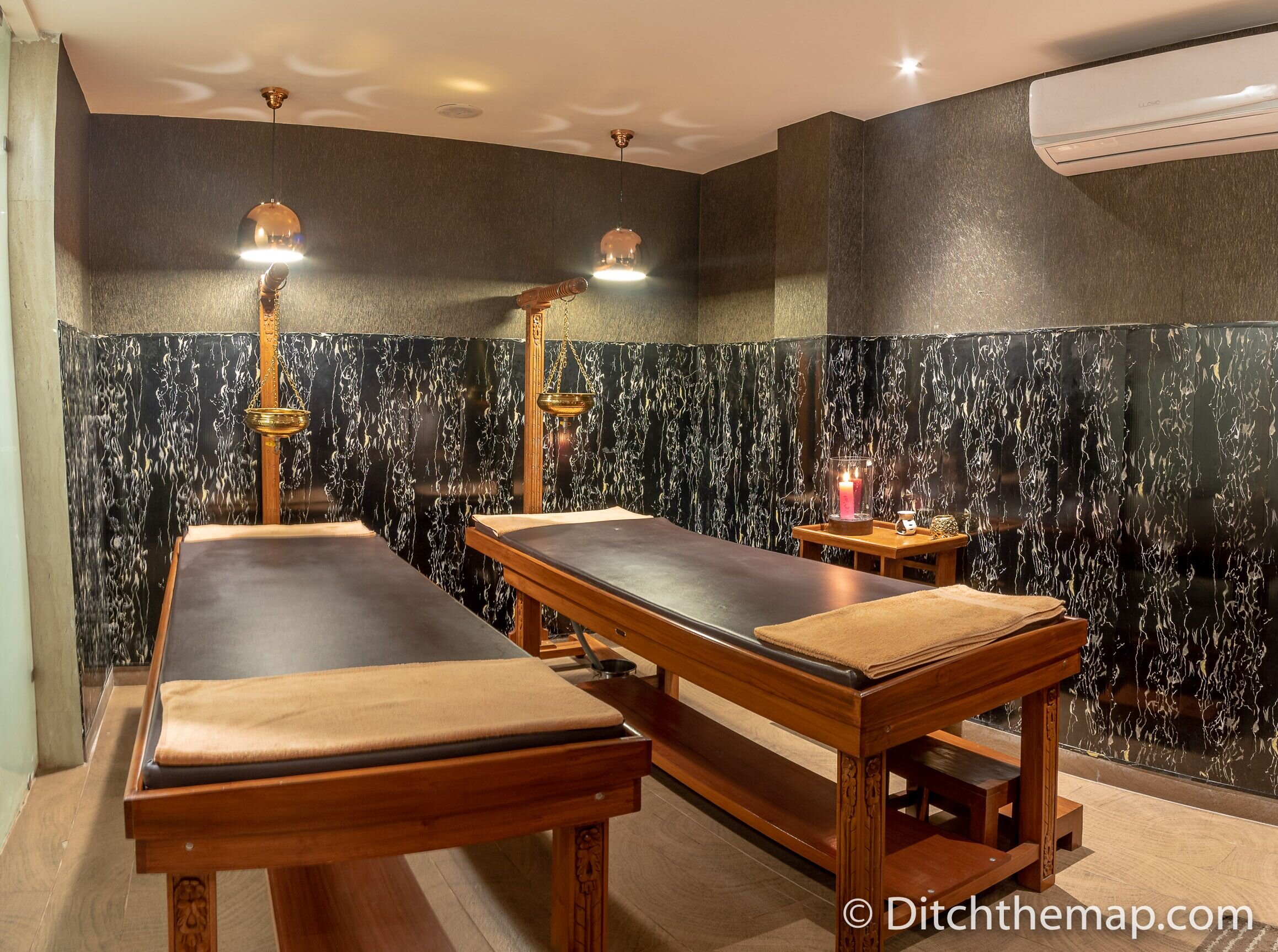
If you found this article helpful please Pin us on instagram!



